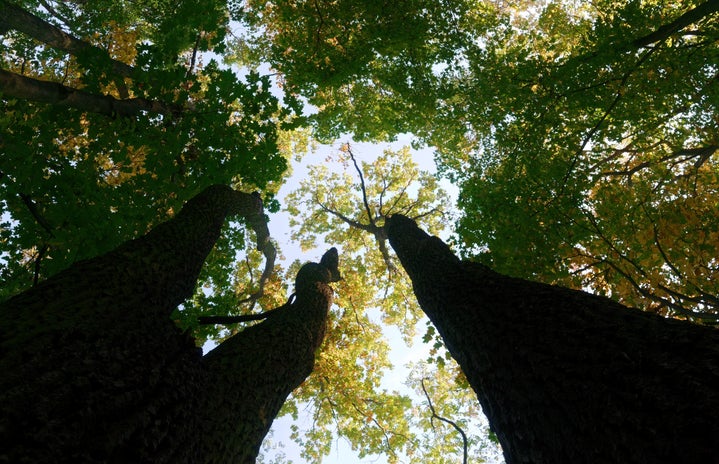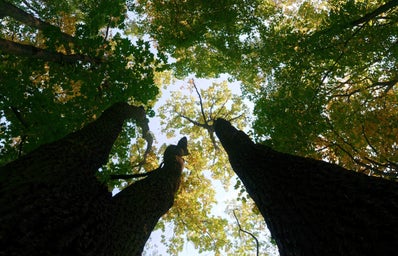With Wells College falling snugly into the middle of autumn, I’m sure we’ve all noticed that our pathways have become covered with increasingly large amounts of leaves. Some trees are almost entirely bare, while others are stubbornly holding onto whatever foliage they have left. One of these trees that refuses to let go is the Ginkgo tree outside of Ryerson Commons; the one right next to the road that has the sloped box next to it. I’ve been told that there are a few Ginkgos on campus that I haven’t found yet, but the one I am most acquainted with is the one that everyone passes as they leave the dining hall. As I’m writing this, most of its leaves are still green and holding on. However, this won’t be the case for long. Ginkgo trees (or Ginkgo biloba) originated from China and were traditionally used for medicinal or food purposes and are some of the earliest trees to be fossilized. Although, the thing Ginkgos are most famous for is how they lose their leaves. As I have been informed by the Ginkgo tree expert that is my grandmother, all of the Ginkgo leaves will turn bright yellow after the first solid frost of the season. And then, eventually, every leaf on the tree will fall at once, meaning that it’s only a matter of hours from the first leaf hitting the ground to the tree being entirely bare. The leaves almost look like snow; constantly falling and covering the ground underneath them in a thick blanket, but usually with none of the cold.
I’ve been actively watching the Ginkgo for weeks, mostly at the request of my mom. She grew up across from a few of them, and it became something of a ritual for her and her family to try to guess when the leaves were going to fall and they would try to witness the mass exodus of leaves when they did decide to let go. I’ve never seen Ginkgo leaves falling myself, but I really want to; I’ve heard that you can make leaf-angels in the sheet of dead leaves that end up on the grass. I love fall anyway and I get childishly excited about crunching leaves underfoot, and sitting under a Ginkgo tree as the leaves are descending and just letting them slowly cover me is somewhat of a goal of mine. So I hope that I’ll be around when the leaves finally let go, although I know it’s more likely that I’ll leave after lunch one day and already see the branches bare. It doesn’t stop me from watching the tree’s progress though. It’s still a beautiful tree.
I decided to call my wait “The Great Ginkgo Watch”, and I encourage all of you to keep an eye out for the Ginkgo’s leaves to fall after the first frost. And if not, maybe do yourself a favor and find a video of Ginkgo leaves falling on YouTube, it’s very therapeutic.



